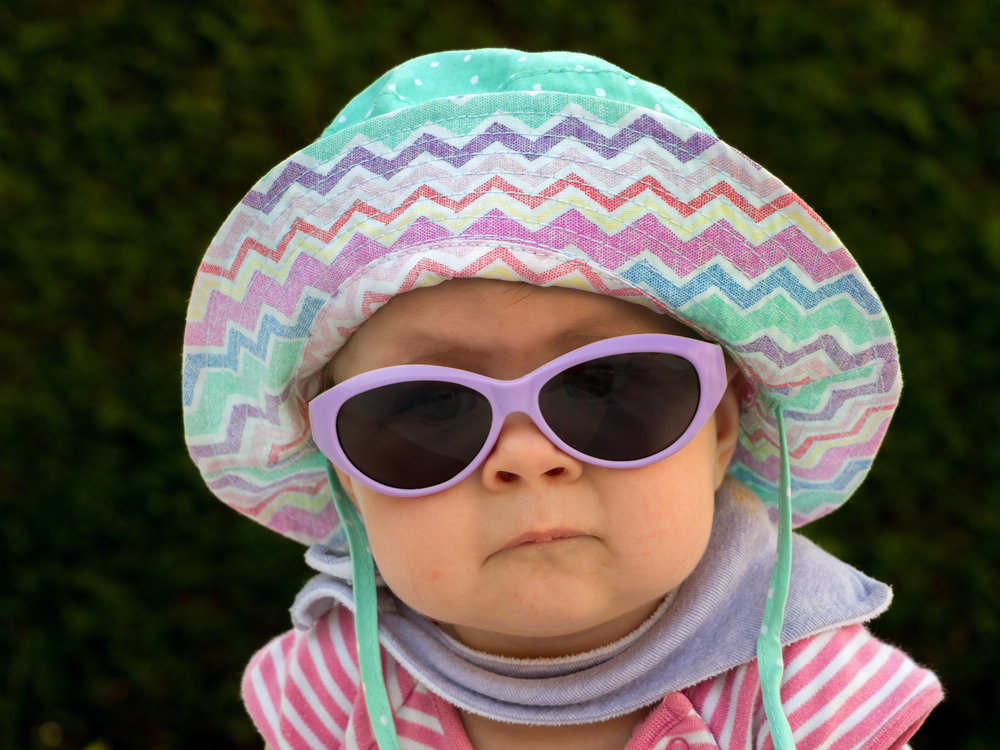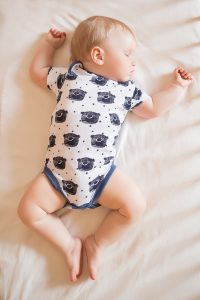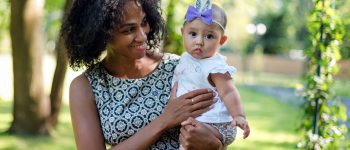Keeping Baby Cool in Summer
Updated April 10th, 2019

Babies become overheated much more quickly than adults. When it’s hot, your baby will need to breastfeed more often. Formula fed babies under six months will need more formula if they are thirsty. You may also offer sips of water from a cup if your baby is older than 6 months.
Keeping Baby Comfortable Indoors
- Dress your baby in an undershirt and diaper or diaper only. Dress your older child in loose-fitting, light-coloured clothing made from a breathable fabric.
- Place the crib or bassinet in the coolest room.
- A fan can help keep the room cool. Fans should never blow directly on the baby and should be out of baby’s reach.
- Mist your baby using a spray bottle filled with cool water or use cool wash cloths to make your baby more comfortable.
- Bathe your child in a cool bath until your child feels refreshed. Always supervise your child in the bath.
- If you have air conditioning, your home may be cool enough.
- If you’re comfortable, then your baby probably is too.

Keeping Baby Comfortable Outdoors
Take a break from the heat by spending a few hours in a cooler place.
- When outdoors, look for a shady, breezy place. Tree-shaded areas could be as much as 5ºC/9ºF cooler than the surrounding area.
- Infants under six months of age should be kept out of direct sunlight, especially between 10 a.m. and 4 p.m. when the sun’s rays are the strongest.
- Keep your child in the shade or protected from the sun by wearing a wide-brimmed, breathable hat or shade them with an umbrella.
- If the sun cannot be avoided, cover baby in light long sleeve tops, long pants and a hat.
- For babies over 6 months, it is okay to use sunscreen. Use sunscreen on exposed areas, like face, ears, neck and back of hands. Reapply sunscreen every 2 hours and after swimming.
Safety Tips:
- If you are planning to go to a swimming pool or somewhere with air-conditioning, keep COVID-19 public health orders in mind.
- Never leave a baby or child inside a vehicle. Parking in the shade, opening the window or running the air conditioner will not keep the temperature inside the car at a safe level.
- Check that the car seat is not too hot before putting baby in, especially the metal parts which get extremely hot.
- If using a baby tent, make sure it has mesh sides for good air-flow and place it in the shade if possible. These can products can get hot inside so check the temperature often to make sure that your baby isn’t overheating.
- If you are draping a cloth over the stroller to help shade your baby, choose a cloth that is light-coloured, and made of light-weight, breathable fabric. Check the temperature in the stroller often to make sure that your baby isn’t overheating.


Your baby might be too hot if she …
- feels hot to you (check the back of the neck and abdomen)
- is sweating
- has a heat rash (looks like tiny pink pimples surrounded by pink skin)
- looks unwell
- becomes floppy
- is irritable
- has skin that feels dry
- refuses to drink
- has fewer wet diapers than usual
If your baby is hot
- Breastfeed more often
- Bottle-fed babies may need extra formula
- You may offer sips of water from a cup if your baby is older than 6 months and taking solids
- Take baby to a cooler location
About Heat Stroke
Heat stroke occurs when the body overheats and loses too much water. Heat stroke can damage the body’s organs and cause death.
Signs of heat stroke include:
- rising body temperature
- less urine than usual
- increased thirst (but as baby gets weaker, he or she may drink less)
- dry mouth and eyes
- headache
- muscle cramps
- baby seems sleepy
- confusion
- shortness of breath
- vomiting
- coma (not waking when touched or called)
If your baby or child has any signs of heat stroke, call an ambulance (911), or take your baby to a hospital.
While waiting for medical treatment: move baby to the shade or indoors and use damp cloths to cool your baby down.
If your baby is conscious and able to swallow, try get her to breastfeed or drink fluids.
Reference:
Caring for Kids- Sun Safety
Healthy Children (AAP)- Protecting Children from Extreme Heat Information for Parents